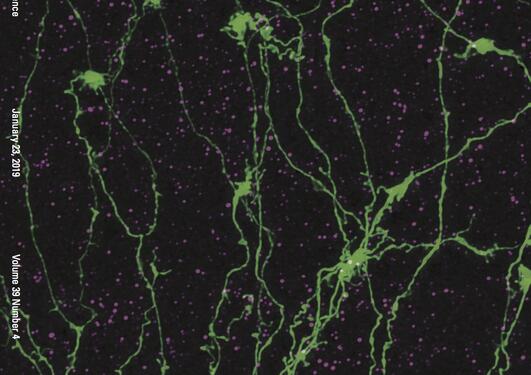Extrasynaptic glutamate receptors in the retina
The Retinal Microcircuits Research Group investigates how neurons in the retina communicate to produce vision. In their latest study, they looked outside the conventional neural circuits and found some unexpected receptor molecules in unexpected locations.

Main content
Usually, communication between neurons occurs at junctions called synapses, where a complex machinery transfers information from one neuron to another. What the researchers in the Retinal Microcircuits Group found, however, was that part of this machinery also appears outside of the synapse.
Using patch-clamp recording and multiphoton microscopy, they looked more closely at a specific microcircuit in the retina. This microcircuit is composed of three neurons: a rod bipolar cell and the two interneurons: A II and A17 amacrine cells. They found that NMDA receptors, a specific receptor type for the most important excitatory neurotransmitter, glutamate, is not found in the synapses of these neurons, but rather outside the synapses.
This is novel for two reasons.
- First, it was previously thought that these interneurons did not possess this type of glutamate receptor at all.
- Second, it is rather unusual to find glutamate receptors outside the synapse, and it is a hot topic of research to determine their function.
Another interesting finding is that the two amacrine cells each express a different subtype of NMDA receptor. AIIs express the GluN2B subtype, whereas A17s express the GluN2A subtype. The different subtypes have different properties, so this is likely to be important for information processing.
The results are published in the Journal of Neuroscience.
Extrasynaptic NMDA receptors on rod pathway amacrine cells: molecular composition, activation, and signaling.
Veruki ML, Zhou Y, Castilho Á, Morgans CW, Hartveit E.
J Neurosci. 2018 Nov 20. pii: 2267-18. doi: 10.1523/JNEUROSCI.2267-18.2018
